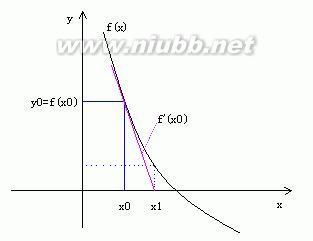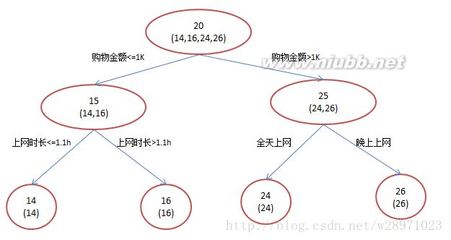1. Theory
http://en.wikipedia.org/wiki/Iteratively_reweighted_least_squares(迭代重复加权最小二乘法)
http://support.sas.com/documentation/cdl/en/statug/63347/HTML/default/viewer.htm#statug_logistic_sect033.htm(SAS Online Help)
2. Implementation in R
The following R cod e uses IRLS algorithm to estimate parametersof Logistic Regression model, and the sample data we used is fromMachine Learning Ex4 - Logistic Regression. Itis a dataset representing 40 students who were admitted to collegeand 40 students who were not admitted, and their correspondinggrades for 2 exams. Our mission, is to build a binaryclassification model that estimates college admission chances basedon a student's scores on two exams(test1 and test2).
To run the codes in R, please follow these steps:
1. Download the csv file by clickling the URL:
http://spreadsheets.google.com/pub?key=0AnypY27pPCJydC1vRVEzM1VJQnNneFo5dWNzR1F5Umc&output=csv
2. Run the R scripts to build the model
# reading data
mydata =read.csv("c://stat/ex4.csv", header = TRUE)
# plots
plot(mydata$test1[mydata$admitted ==0], mydata$test2[mydata$admitted == 0], xlab="test1", ylab="test2",, col="red")
points(mydata$test1[mydata$admitted == 1],mydata$test2[mydata$admitted == 1], col="blue", pch=2)
legend("bottomright", c("not admitted", "admitted"), pch=c(1, 2),col=c("red", "blue") )
![[转载]迭代重复加权最小二乘法(IRLS)_熙箔 加权最小二乘法matlab](http://img.aihuau.com/images/01111101/01084152t015307916341167820.jpg)
# build the model
g <- function(x) { return(log(x/(1 - x)))}
g.inv <- function(y) { return(exp(y)/(1 +exp(y))) }
g.prime = function(x) {
return(1/(x * (1 - x)))
}
V = function(mu) {
return(mu * (1 - mu))
}
niter = 10
mu = rep(mean(mydata$admitted),length(mydata$admitted))
for (i in 1:niter) {
Z = g(mu) + g.prime(mu) * (mydata$admitted -mu)
W = 1/(g.prime(mu)^2 * V(mu))
Z.lm = lm(Z ~ test1 + test2, weights = W, data =mydata)
eta = predict(Z.lm)
mu = g.inv(eta)
beta = Z.lm$coef
}
# print estimatedparameters
print(beta)
(Intercept) test1 test2
-16.3787434 0.14834080.1589085
# get 2 points (that will define a line)
x1 = c(min(mydata$test1), max(mydata$test1))
# when ax0 + bx2 + cx3 = 0 is the middle(decisionboundary line),
# so given x1 from sample data, solving to x2, we get:
x2 = (-1/beta[3]) * ((beta[2] * x1) + beta[1])
# plot
plot(x1,x2, type='l', xlab="test1", ylab="test2")
points(mydata$test1[mydata$admitted == 0],mydata$test2[mydata$admitted == 0], col="red")
points(mydata$test1[mydata$admitted == 1],mydata$test2[mydata$admitted == 1], col="blue", pch=2)
legend("bottomright", c("not admitted", "admitted"), pch=c(1, 2),col=c("red", "blue") )
The original R code is from
http://www.stanford.edu/class/stats191/logistic.html,and I changed it a little.
3. Implementation inSAS
proc import datafile="c:statex4.csv"
out=ex4
dbms=csv
replace;
getnames=yes;
run;
proc logistic data=ex4 des;
model admitted=test1test2/tech=fisher;
run;quit;
| Analysis of Maximum LikelihoodEstimates | |||||
|---|---|---|---|---|---|
| Parameter | DF | Estimate | Standard Error | Wald Chi-Square | Pr > ChiSq |
| Intercept | 1 | -16.3787 | 3.6559 | 20.0717 | <.0001 |
| test1 | 1 | 0.1483 | 0.0408 | 13.2009 | 0.0003 |
| test2 | 1 | 0.1589 | 0.0416 | 14.5613 | 0.0001 |
| Association of PredictedProbabilities and Observed Responses | |||
|---|---|---|---|
| Percent Concordant | 89.5 | Somers' D | 0.791 |
| Percent Discordant | 10.4 | Gamma | 0.792 |
| Percent Tied | 0.1 | Tau-a | 0.401 |
| Pairs | 1600 | c | 0.896 |
 爱华网
爱华网



